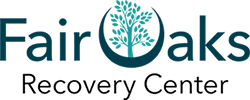 When it comes to selecting a treatment program, there are two seemingly conflicting bits of wisdom to consider. First, not all that glitters is gold. Second, you get what you pay for. These ideas may sound like opposites, but they are actually both applicable in the case of substance abuse treatment.
When it comes to selecting a treatment program, there are two seemingly conflicting bits of wisdom to consider. First, not all that glitters is gold. Second, you get what you pay for. These ideas may sound like opposites, but they are actually both applicable in the case of substance abuse treatment.
Not All That Glitters Is Gold
It’s important to invest enough in rehab to ensure positive results and a safe location. There are many bells and whistles that may increase the cost of treatment without improving the quality of care being received. These can include:
- More private space
- Expansive, manicured grounds
- Newer buildings
- Fancier décor
- Beachfront property
- Spa treatments
- Massages
- Gourmet meals
- High end recreational offerings
- Pools and hot tubs
In fact, some treatment programs that look like fancy resorts may be lacking in critical features, which can make visiting them no more effective for recovery–but considerably more expensive–than taking a nice vacation. It is not uncommon, when a person is genuinely and properly engaged in the early stages of recovery, for them to be too busy to thoroughly enjoy the sorts of accommodations boasted by a luxury rehab program. It may be worth considering whether the “extras” are worth it before potentially signing away thousands of extra dollars for the same treatment one could have gotten at a better price elsewhere.
You Get What You Pay For
This isn’t to say that rehab is the best place to go cheap. It is important to ensure that whatever recovery program is selected includes the essentials of any good treatment program, such as:
- Multiple Levels of Care – Detoxification, residential treatment, day treatment, or Intensive Outpatient (IOP) are all options a person might need at different points in recovery. If they are all offered in one place, there won’t be as much disruption when it is time to transition to a different level.
- Aftercare – Substance use disorder is a chronic condition that requires on-going support. A treatment program that offers a strong aftercare program helps protect clients against relapse.
- Personalized Care – Every person facing addiction is a unique individual, with different needs than anyone else. Centers that recognize this and play to each guest’s strengths and needs can increase the success of treatment. Personalized care can include:
- Individual therapy
- Group counseling
- Education about and treatment for co-occurring medical and mental health diagnoses
- Spiritual outlets
- Flexibility on time frames
- Ability to bring children along to inpatient treatment
- Community service opportunities
- Engagement of support systems – Programs that offer family therapy and education for loved ones are building up the guest’s entire network of support and reducing their odds of relapse.
- Being qualified, certified and accredited – Rehabs generally post their credentials and the credentials of their staff on their website. If you can’t find this information online, don’t be afraid to ask what they can show you to demonstrate their competency, effectiveness, and professionalism.
- Being covered by insurance – Not every treatment program will be covered under every insurance program. An out-of-state treatment program is generally less likely to be covered, but this is not always the case.
- Being in a safe, secure location
- Confidentiality
One study on the costs of substance abuse treatment found that programs with lengthier average stays and more counseling sessions tended to be costlier than programs that kept guests for shorter periods of time and gave them less counseling; however, that cost may be well worth the money, as longer stays and more therapy sessions are both correlated with stronger recovery and fewer relapses.
Red Flags
Some treatment programs try to lure people in without actually offering the care they need to obtain and maintain recovery. Here are several red flags to watch for:
- Offers to pay for transportation or get insurance to cover it. Insurance generally does not pay for transportation. Offers like this usually come from brokers, who are contracted by unsavory rehabs to fill their beds.
- Lack of a structured treatment program. If it’s not clear what type or how much therapy will be offered, what the expected duration of treatment will be, or whether there are options for aftercare, chances are the program is not credible.
- Unwillingness to discuss their accreditation.
- Difficulty determining the physical location of the treatment program from looking at the website.
- They offer to help find insurance or to waive part of the fees, but then bill for things that were supposed to be covered or waived.
At Fair Oaks Recovery Center in California, where we offer several treatment services, we encourage all prospective guests and their families to ask lots of questions and do plenty of research. We want you to feel secure in the program and the services we offer.



